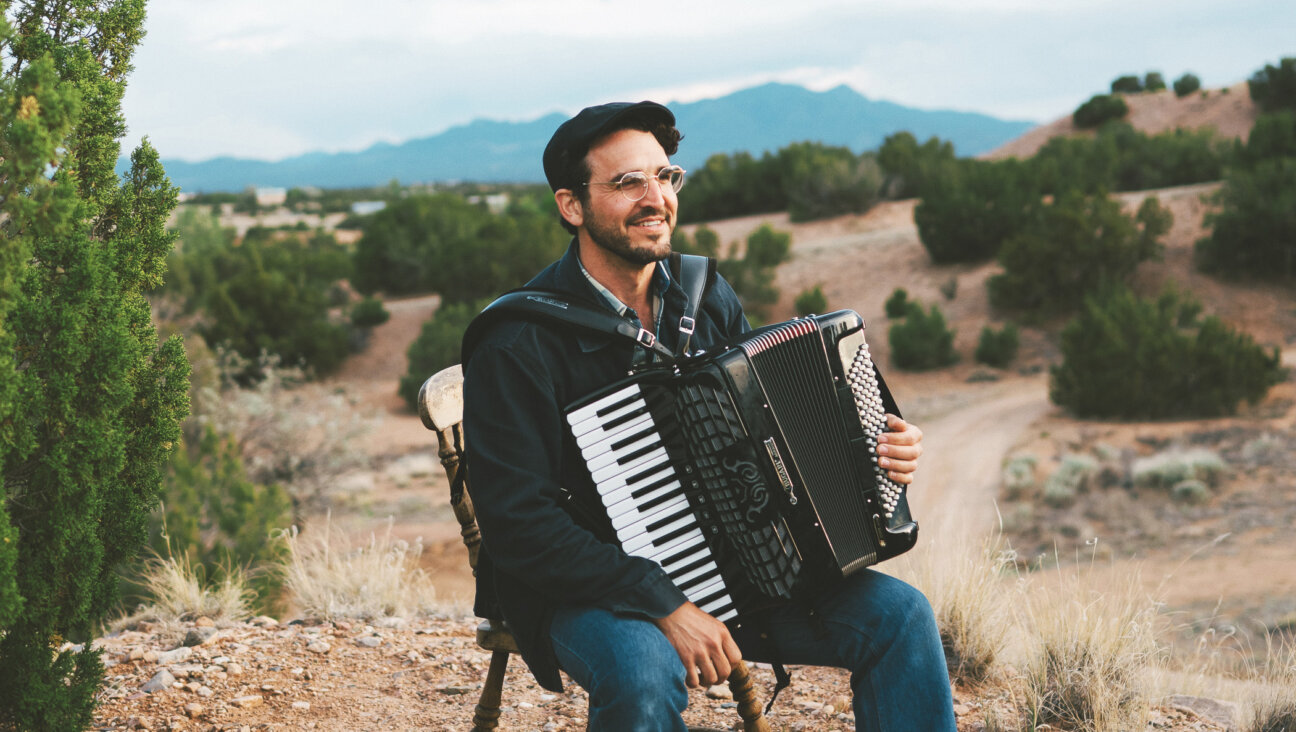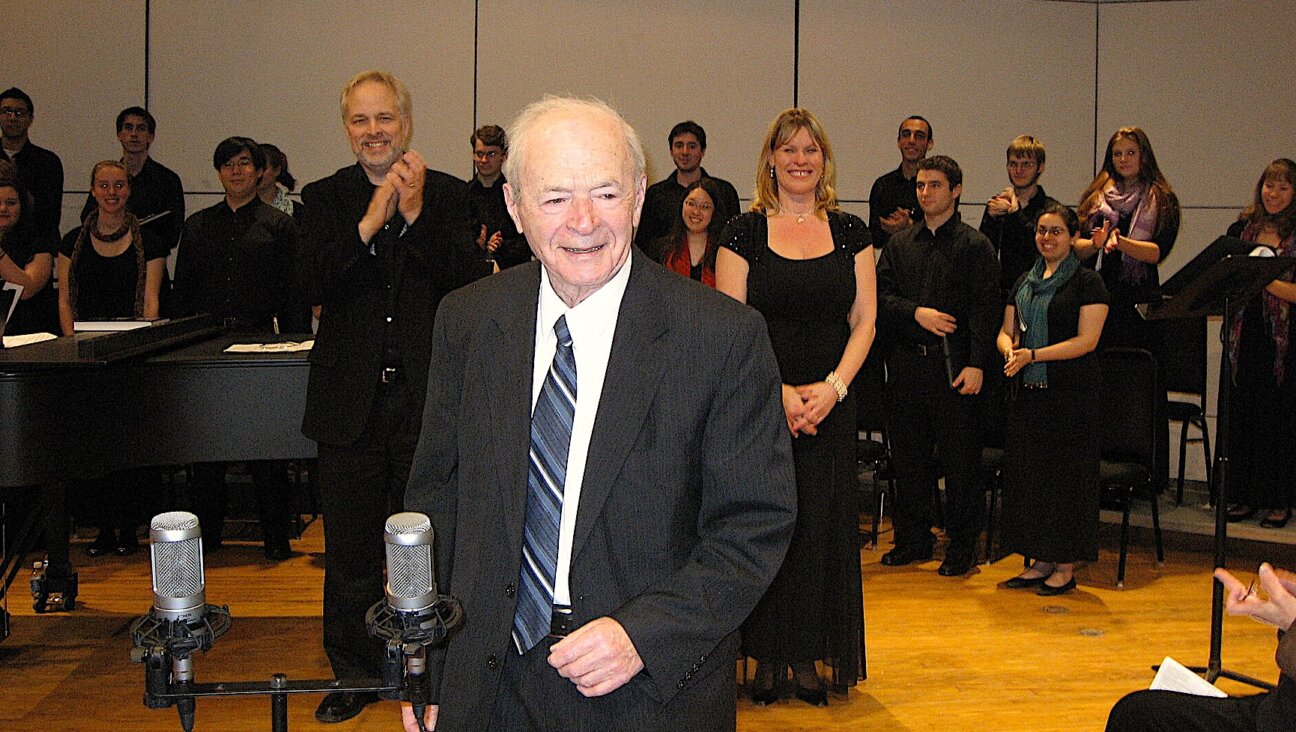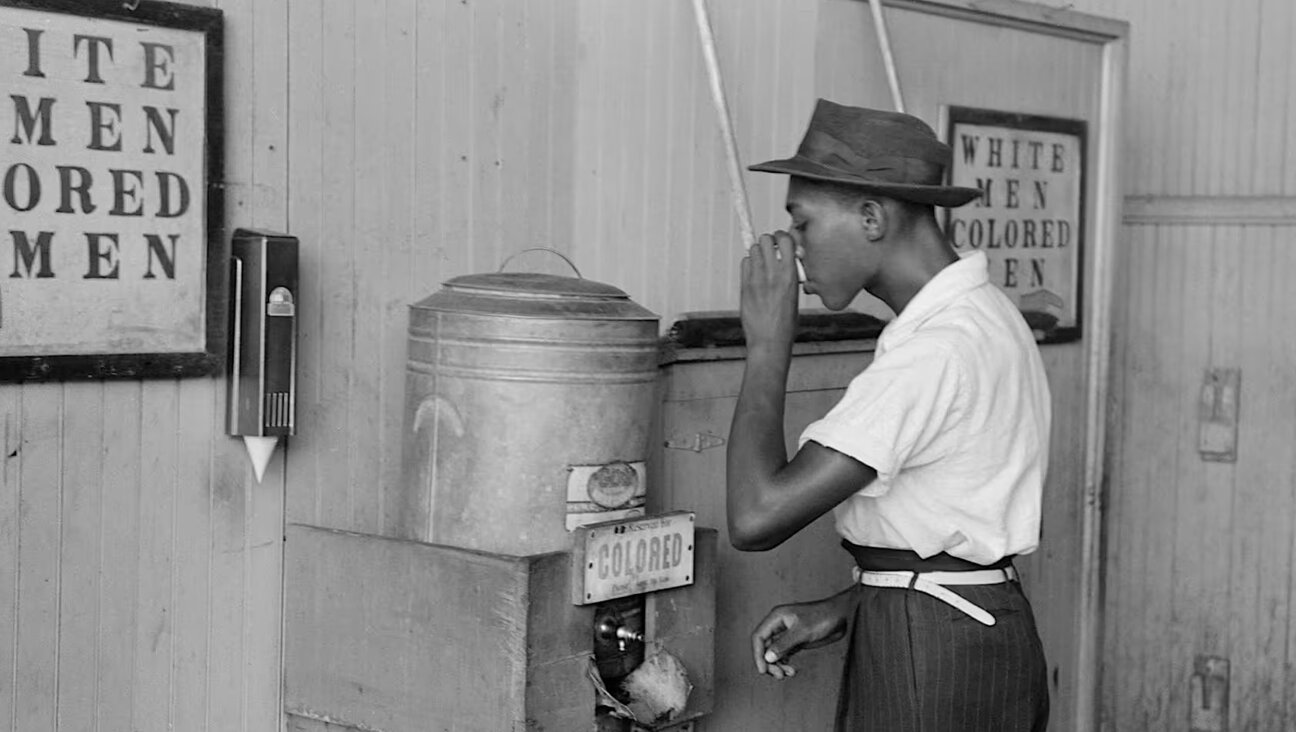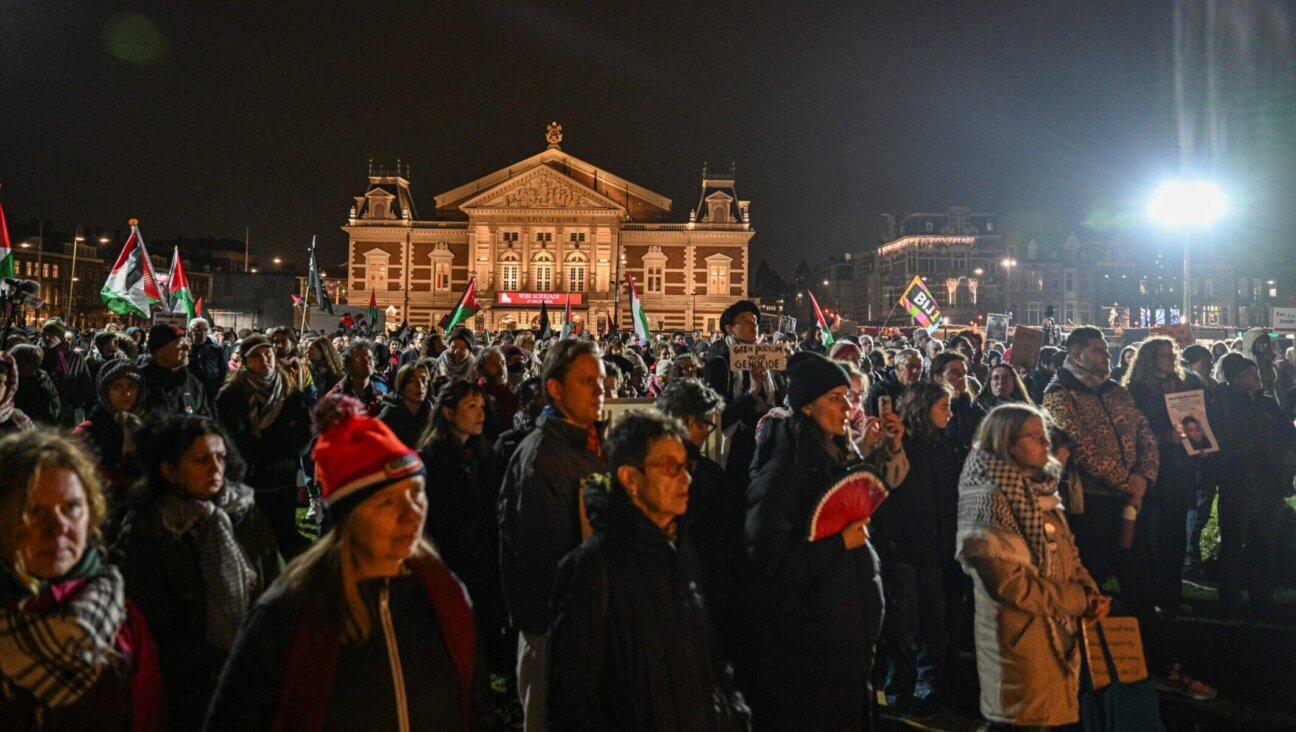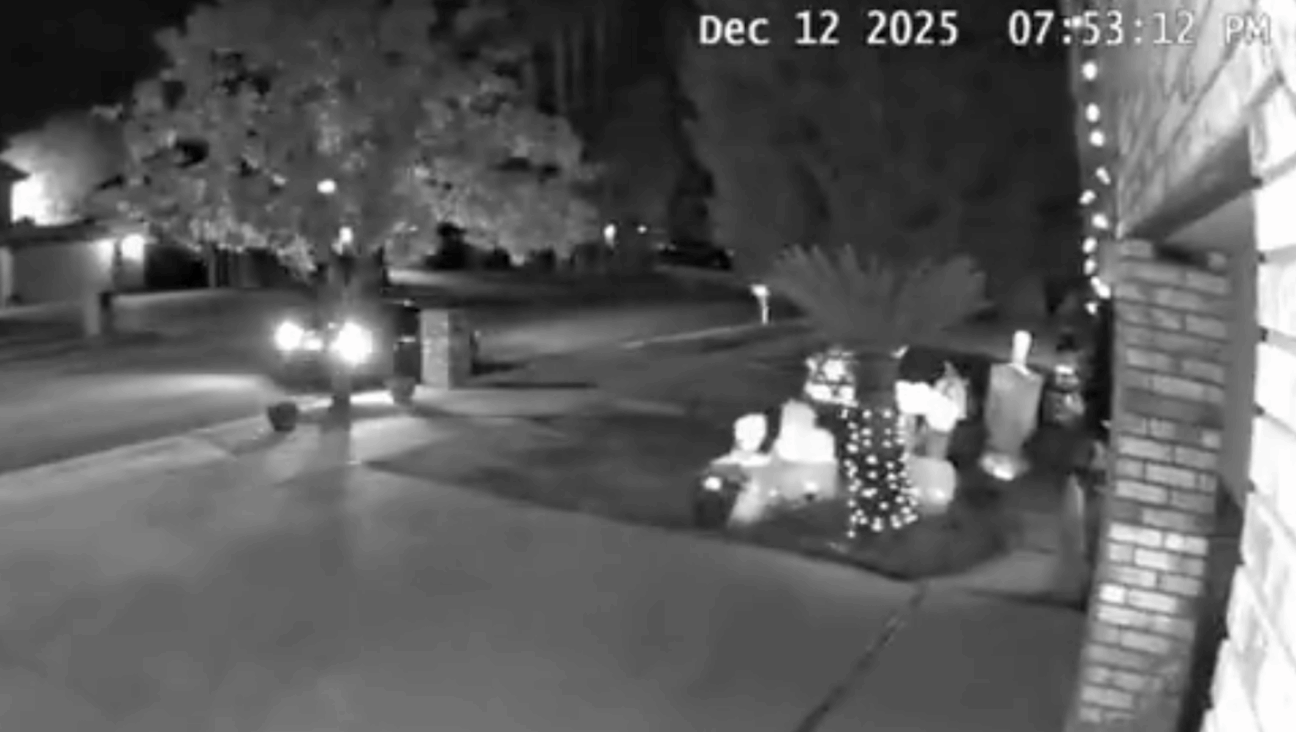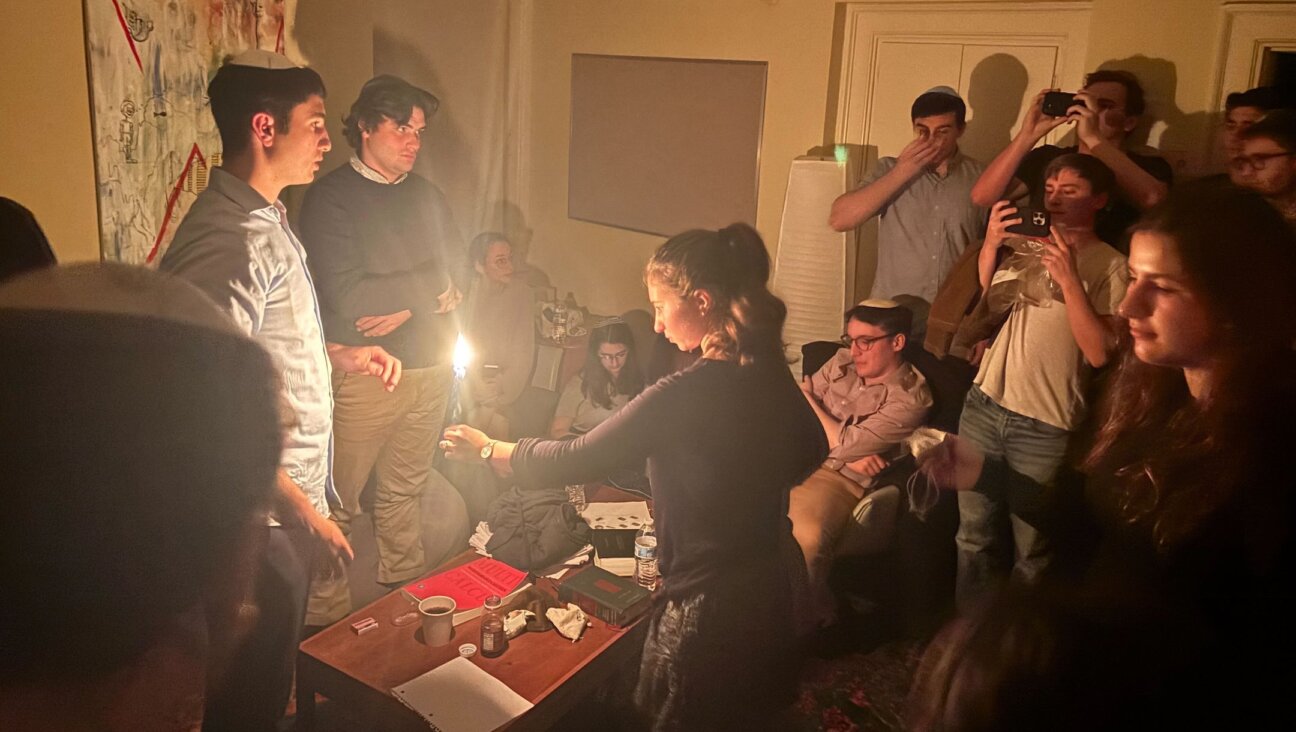‘I’m not religious, but my 10-year-old wants to go to synagogue — what should I do?’
Before taking her 10-year-old to his first Yom Kippur service, Kyla Kupferstein thought, ‘What if he likes it?’
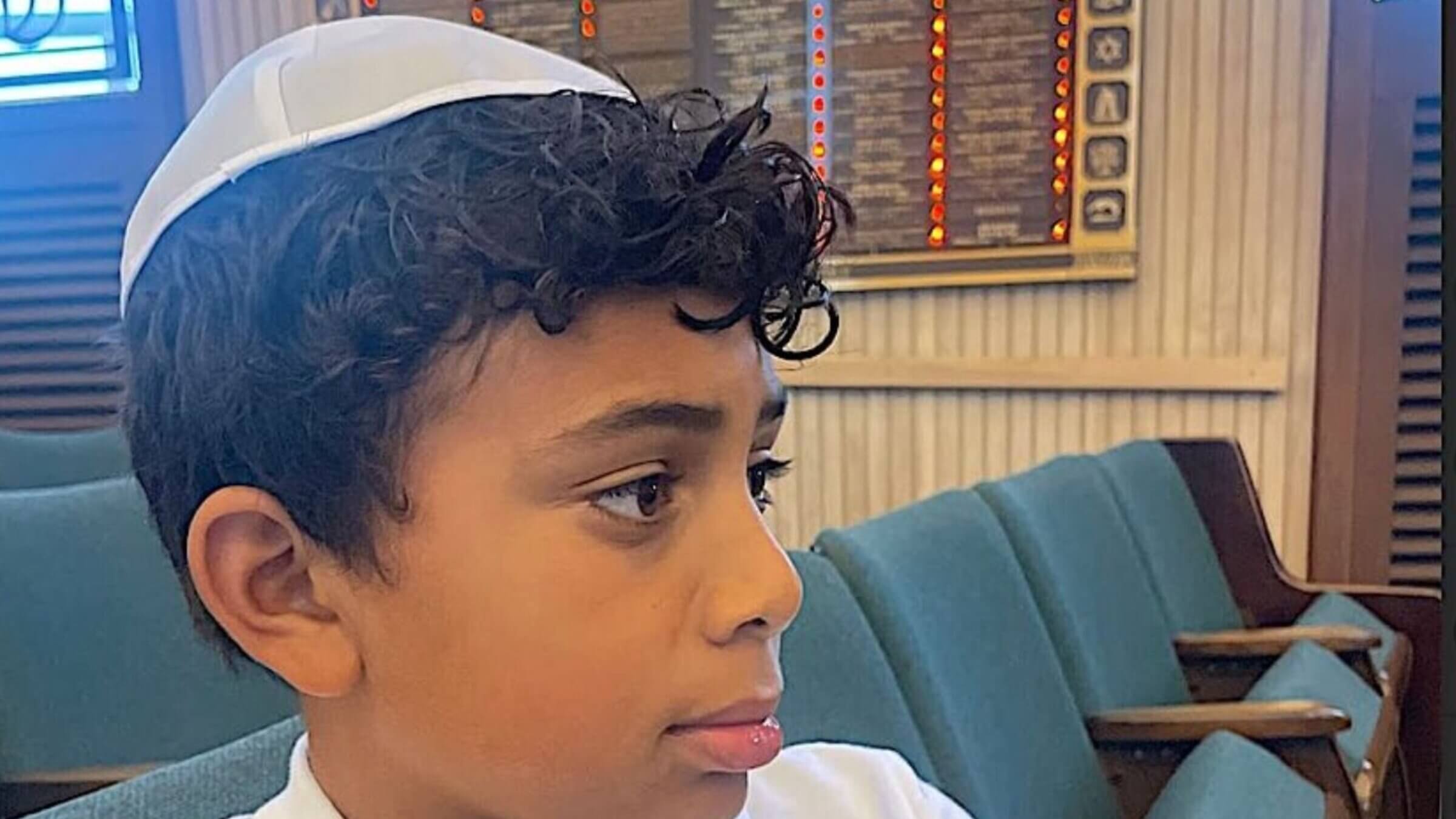
10-year old Naftali at Temple Beth Abraham in Oakland, CA before the Kol Nidrei service Photo by Kyla Kupferstein Torres
Last month, my 10-year-old son Naftali said: “Mami, I want to go to a synagogue.”
It took me by surprise. When I was a kid, no one in my family had ever taken me to a shul — except maybe for a wedding. My grandparents were secular Bundists, and my father took his atheism quite seriously.
I didn’t get a formal Jewish education, but the 7th grade Year of Bar Mitzvahs was a crash course for me. Being in synagogue each weekend exposed me to every brand of Judaism. It didn’t make me believe in a solid idea of God, but it sparked a recognition that Judaism was more than just bagels, Yiddish and stories of the Holocaust. I started to identify a little more deeply as a Jew.
But I was a Black Jamaican-Ashkenazi girl. Even though I grew up steeped in Yiddishkeit, emotionally close to my Holocaust survivor grandparents, it was my father who was Jewish, so according to Jewish law, I wasn’t. (The Torah stipulates that only a person with a Jewish mother is Jewish.) So between halacha and race, I didn’t quite fit the Jewish mold. I was often bugged by questions like, “how can you be Jewish when your mom is Black?” Or plainly dumb comments from other kids like “You’re Jewish, but not really Jewish.”
It nagged at me for years, but by the time my son was born, I’d made peace with the kind of Jew I was — not religious, but deeply connected to ritual and culture, and keen to pass a heritage largely lost in the Holocaust on to my child who, like me, had only one Jewish parent. So Naftali had a bris and to this day we say the shema together each night.
Naftali experiences Rosh Hashanah at an outdoor service
I created a community of other mixed-race moms and kids called “Afro-Semitic Sisters” — and we marked the holidays together. We were our own kind of Jews, lighting candles and eating challah at a Shabbat table with folks of different backgrounds. Once he was old enough for sleepaway camp, I sent Naf to Be’chol Lashon, a camp for Jewish kids of color.
After his second summer at camp, I was startled when he came home asking about ritual hand washing, correcting my recitation of the hamotzi on Shabbat, and wondering why we didn’t go to synagogue.
“If you’re going to show this world to him, you can’t show him just half. You have to show the whole thing,” says my Episcopalian friend Erica, who coaxed her own kids, firmly, through confirmation in the church. “He has to know where it comes from.”
So I signed us up for Rosh Hashanah services at Kehilla. It’s a progressive Bay Area congregation, with the LGBTQ+ flag hanging outside the building. Their homepage even acknowledges that they stand on native Ohlone land. The morning family service was held on the lawn of a park. Families had blankets and camping chairs, and kids of all ages were running around getting splattered with mud. Three women in tallitot, one with a guitar, invited us to sing the wordless “dai, dai, dai” melody in one of the prayers, and Naftali immediately began singing along. I knew he’s heard some of these tunes at camp, but he seemed deeply familiar with the music.

Naftali wants to see a ‘real’ shul
All the prayers were typed out on a two-sided handout — the shema, the mourner’s kaddish, the shofar calls — but somehow sitting outside in a field didn’t feel like shul to me, or like something out of the ordinary. I wore a dress and made Naftali wear a collared shirt with his cargo pants.
He squirmed a bit during the service but was excited when the Torah scroll was brought out of the makeshift ark. With only a little prodding, he joined the kids that were called up to the plastic folding tables covered with brightly embroidered cloth where they laid the the scrolls, and with some shy reluctance followed the procession of the Torah through the crowd of families on the muddy lawn.
Although the cantors told us we need not stand for the prayers unless we’re moved to do so, I stood up for the “standing” prayers and told Naf to do the same. To me, a shul has certain rules that may be very different from the rules we follow in our everyday lives. I wanted this to feel different for him, and for me, and to instill a respect for the formality of religious practice in him. But I wasn’t sure why. Religious practice isn’t something I’ve ever learned to do, or want to do. And it wasn’t part of my plan for Naftali, either.
“Did you like it?” I asked him later that afternoon.
“I liked the music,” he said. “And when they do the prayers from the Torah. But is that a synagogue? Where do they usually keep the Torah?” He wanted to see a real shul, a building with an ark, a Torah scroll adorned and protected in its permanent home. So I bought tickets for the Kol Nidre service Yom Kippur night at Temple Beth Abraham, a Conservative congregation in Oakland.
Beth Abraham was by-the-book Yom Kippur
I worried over everything about going to a real synagogue. Has Naftali outgrown his one pair of decent pants? Will other boys wear suits, or dress in the typical Bay Area casual? What if we’re the only people of color there? What if Naftali likes it? What if he likes it too much? What if he wants to join a shul? And if he wanted to join a congregation, could I say no?
If Kehilla was a remix of Rosh Hashanah accompanied by guitars in the woods, Beth Abraham was by-the-book Yom Kippur. Please stand. Be seated. Lots of people there seemed to have memorized prayers over a lifetime of Hebrew school and services. The rabbi gave a sermon about politics in Israel.
But just as Naftali did on that muddy Rosh Hashanah morning a week earlier, every time the cantor started singing, he tried to sing along. Some of the tunes and even the words came back to me from all those bar mitzvah ceremonies, all the tagging along with my high school and college friends and whoever else would take me to services. It was a time when I was trying to figure out who I was in a world where being Jewish the way I was Jewish made me feel different, excluded, needing to right a wrong I didn’t quite understand.
But as we both mumbled through “Avinu Malkeinu,” I realized Naftali didn’t have to figure this part out. He’s never been told that being Jewish and Black is a problem. His mother, despite the halacha, is Jewish.
When we got home Naftali said he wanted to become a bar mitzvah so “I can be seen as a Jewish adult.” He may not yet have a strong understanding of his spirituality, but he knows he has the space to explore and create it. It’s a space I was not given, but that I took for myself and am passing on to him. Maybe I can just walk alongside him, as he figures out how his ethnicity and his spirituality can speak to each other. Along with the cantor’s voice, he seems to hear both clearly.

